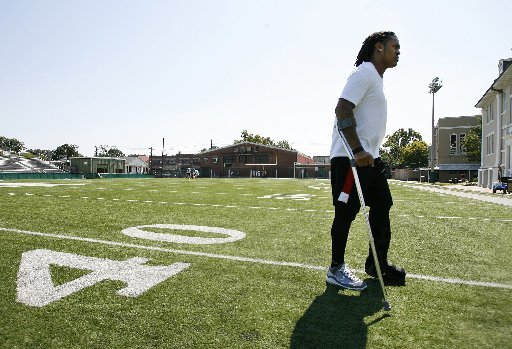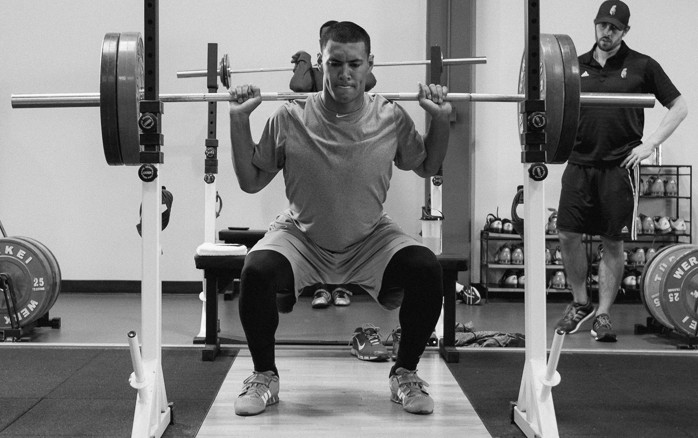
The hardest part of returning from injury is loneliness. You are not training or playing with your team or coaches, you are on your own program. It is like treading water in the dark, until suddenly land appears in the distance and you can finally swim to shore. Unfortunately the timing for this appearance of land is unclear and generally simplified by an arbitrary, set timeline (6 weeks, 3 months, etc.).
The loneliness is amplified from the little visibility of how you are progressing. Your passive range of motion is better? Your balance is better when standing eyes closed on an unstable surface? The feedback from these assessments is subjective, which begs the question of when the performance on such evaluations is sufficient to progress to the next phase. This darkness is most noticeable in the early phases of rehabilitation, often called non-participation, because the recommendation is no involvement in the sport or similar movements.
Regardless of the location of the injury, you must be strong enough to control your body mass to return to your sport. An objective assessment is key to assess such force capabilities, so we begin with a balance test to assess the athlete’s ability to stabilize statically. The athlete holds a set position through the upper or lower body, attempting to correct any sways in their center of gravity to bring back to center. Using a 7 year database, we are able to differentiate both the absolute and relative strength capabilities. Absolute is how you quantitatively compare to your peers, irrespective of extremity side (left vs right). If you fall below a threshold (let’s say a T score of 40), then you are still a heightened risk for re-injury. The relative threshold is 10 apart between your sides. A T score of 10 is 1 standard deviation, so we have found this value to also be indicative of increased odds for re-injury, even if your performance is above 40.
The second component is resilience (how you respond to loading), so we also conduct our merit based programming. The concept is similar to auto-regulation in that your progression is based on merit, progressions are only allowed once the athlete achieves milestones, what we call levels. When the athlete achieves level 2.1, they have completed a sufficient exercise intensity based on percentages of their body weight with prescribed work:rest ratios. Aside from 1 RM percentages being inaccurate/infrequent, % body weight is particularly advantageous here.
Each level provides not only higher weights, but less rest, a concept often called density training. So at level 2.1, the athlete has sufficient strength to progress from non-participation to a limited participation status.
Achieving a clearance level of 2.1 takes at least 4 weeks, and the balance assessment is done each week to see the response for the athlete to fatigue from such exercise. This combination is important because athletes can have healthy sways when rested, but to test their resilience, it is important to require both a healthy balance assessment and sufficient strength via a force assessment.

The last component involves a surgeon who performed the repair or evaluation. Often times, this individual has provided an intervention (bone graft, injection, etc.), which has clear objective timelines for the medicine or surgical repair to fully manifest.
Treading water is a great analogy for the injury process because they are both lonely and just plain boring. There is so much an athlete can do in the rehabilitation process, especially in the early phases of non-participation.
Use an objective assessment to benchmark weekly progress
Choose limited range of motion exercises, with clear body weight percentages prescribed
Surgeon clearance is ultimately required
These concepts can allow safe progressions to ensuing phases and most importantly provide the visibility to give the athlete their best medicine…hope that land is in sight.